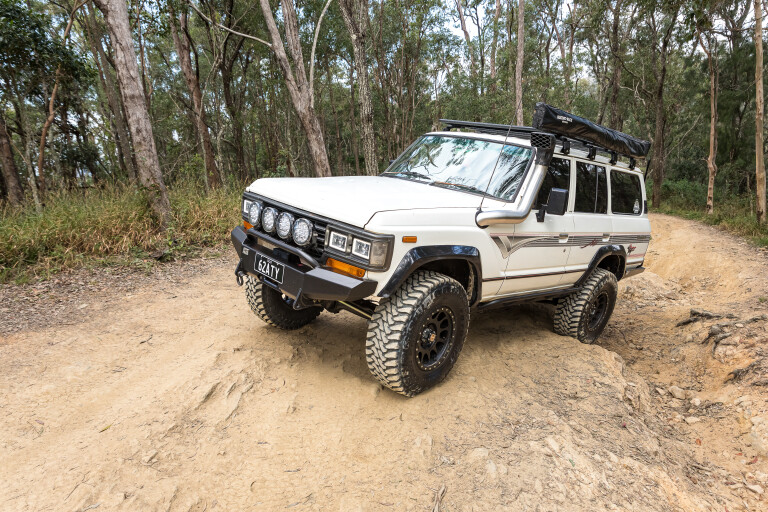
The 4x4 world is deep in a retro revival. You don’t have to look far to see major manufacturers building throwback models like the Bronco and upcoming Scout.
The aftermarket is in on it too. Fibreglass mock-up kits are available for a range of Jeeps to give them classic styling. That’s without even looking at the endless ’70s inspired vinyl wraps adorning Troopies all over the country.
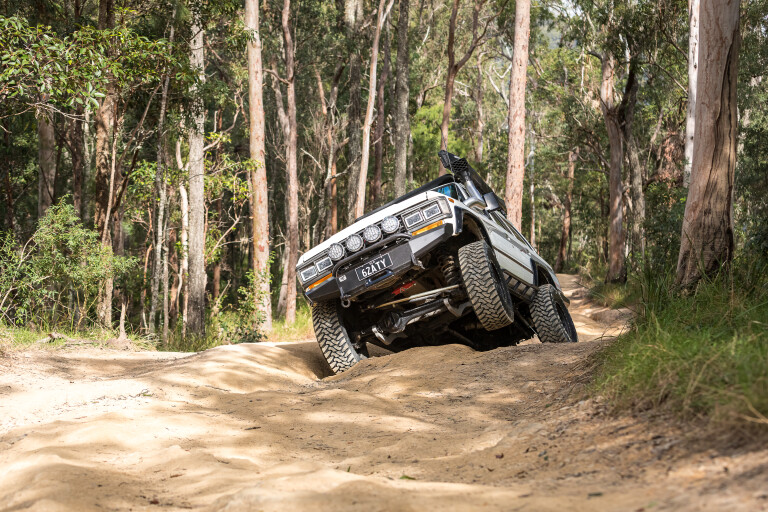
But the 60 Series LandCruiser you’re looking at isn’t a cheap gimmick. It’s the real deal. The type of 4x4 the newer vehicles can only hope to emulate. And it’s something that can only be bought with a blank check for hard graft.
McKinnon’s Cruisers in South East Queensland is responsible for the build you’re looking at. They kicked it off with a clapped out 1988 HJ60 LandCruiser. With 671,889km on the clock it had a proven cool factor, but was seriously long in the tooth. The decision was made it’d get their near-iconic 60/80 upgrade.
Chassis upgrade
First things first. The original HJ60 frame was unbolted and thrown to the side. After well over half-a-million kays on the tracks, it simply wasn’t going to cut it.
Riveted on body mounts and leaf springs all-round might be authentic, but by swapping in a chassis from a 1992 HDJ80 the classic Cruiser now sports a significantly better chassis, with coil springs and disc brakes on each corner. It wasn’t a bolt-on job though, 125mm needed to be sliced out of the wheelbase to suit the 60’s smaller proportions.
The newer 80 Series chassis underneath provided plenty of upgraded opportunities to really make the Cruiser an animal off road. Up front, the factory 80 Series radius arms have been binned. In their place Superior Engineering castor correction arms have been fitted up. They’re paired with a heavy-duty and adjustable tie rod, drag link and Panhard rod to keep the front axle where it needs to be, and pointing where it needs to point.
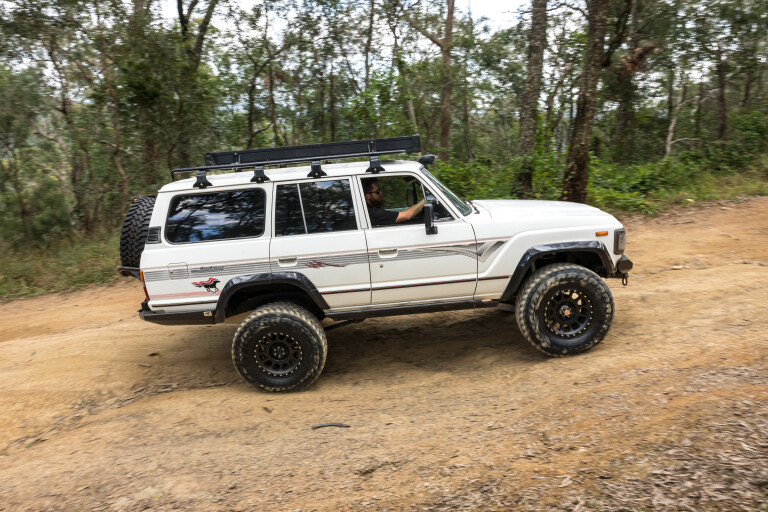
Inside the front diff got a working over as well. In the diff centre, a selectable ARB Air Locker allows maximum traction with the flick of a switch. The CV joints in either side have been replaced by heavy-duty chromoly versions from USA-based Longfield. The free-wheeling hubs also copped a Longfield gear upgrade, and the hub studs have been drilled out and upgraded with beefier 10mm studs.
There’s a similar spec sheet up the back too. There’s Superior Engineering HD lower control arms, adjustable uppers and an adjustable Panhard rod. A second ARB Air Locker sends drive to both wheels, with more 10mm stud upgrades ensuring the 60’s axles do as they’re told, even when driven in anger.
Modern wheels got the nod. A set of 305 NV Method Race Wheels punch in at 17x8.5. They’re wrapped inside 35x12.5R17 Toyo Open Country M/Ts. The 50mm lifted coils on each corner and Superior Engineering remote reservoir shocks free up some room for the larger rubber and ensure the 60 flexes up on the tracks better than most modern rigs.
V8 transplant
Of course, all that trick suspension isn’t much good without an engine driving it. When the Cruiser rolled off the production line back in the ’80s, the 2H diesel it was sporting had a 4L capacity, six cylinders and not a single turbo in sight. The result was an anaemic 80kW, and just 240Nm.
The call was made to bin the old donk and slot in something with a little more anger in its place. Resting between the chassis rails now is an L77 6.0L V8 pried from a late-model VF Commodore. Power has climbed a huge 225 per cent to 260kW. Torque has more than doubled too, up to 517Nm. Breathing in through a custom stainless-steel snorkel, and out through a custom exhaust. It’s a combo that could put a horn on a jellyfish.
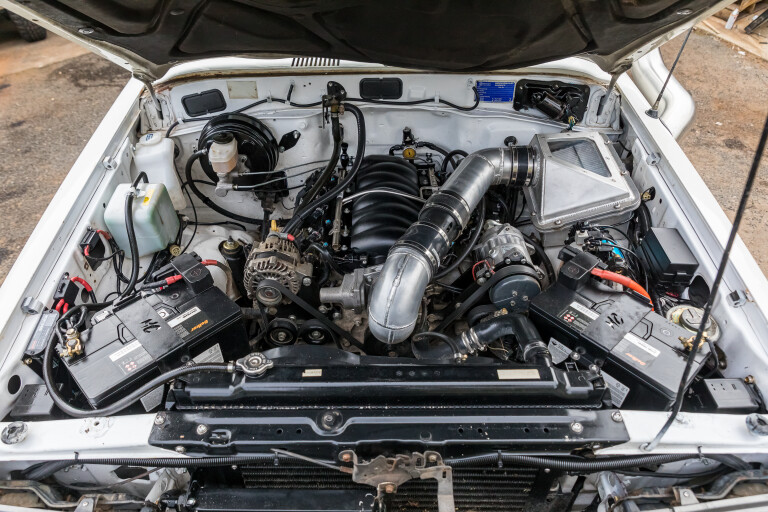
Ensuring all that power gets to the ground, a 6L80E transmission has been given the nod. Featuring six gears, and heavier duty internals over the more common 4L60, it’s a winning combination shoehorned between the V8 and 80 Series transfer case.
There’s a Lokar Tiptronic shifter mated up for precise control when required, or for banging gears when demanded. V8s aren’t exactly known for conservative fuel consumption when you mash the loud pedal, so a custom 150L fuel tank has been fitted up behind the rear axle too.
With the 60’s driveline and suspension sorted, it was time to turn attention to the armour package. Up front, McKinnon’s Cruisers pieced together one of its plate steel low-mount winch bars in place of the factory bumper. It plays host to a squad of four Vivid Max LED spotlights from EFS, while JTX LED headlights fill the factory holes.
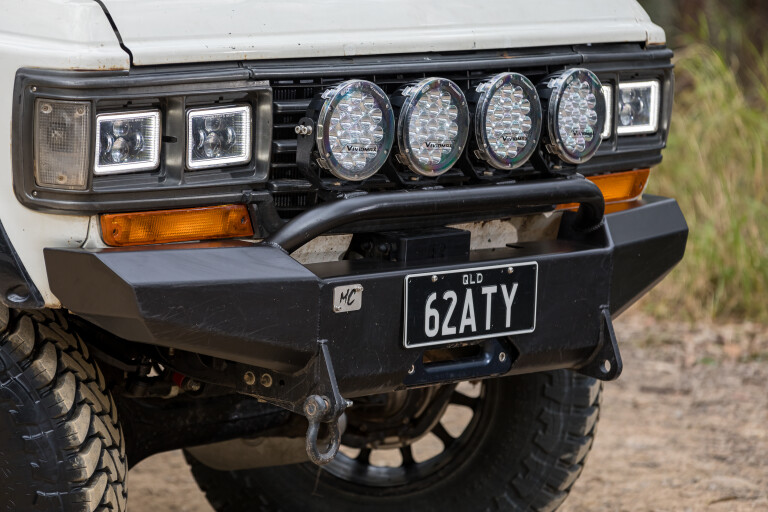
Moving along the flanks, and FRP flares cover the wheel arches for the increase in wheel track and McKinnon’s Cruisers upswept sliders protect the soft sheet metal rocker panels. A touring styled flat rack up top provides bulk storage solutions and gives the Rhino-Rack 270-degree awning a permanent home.
The rear bar is the real work of art though. Another McKinnon’s Cruisers item, it provides huge protection for the rear end and vulnerable quarter panels. It ties in with a trick tube spare-tyre mount, UHF aerial holder and rear facing LED light bar.
80s vinyl
Swing that driver’s door open with a creak and on the inside you’ll find a simple 80’s interior. The original vinyl seats show every drive of that 670,000km and are all the more cool for it. A sea of brown vinyl covers the floors and doors, and a cheeky Alpine Type R stereo modernising things somewhat.
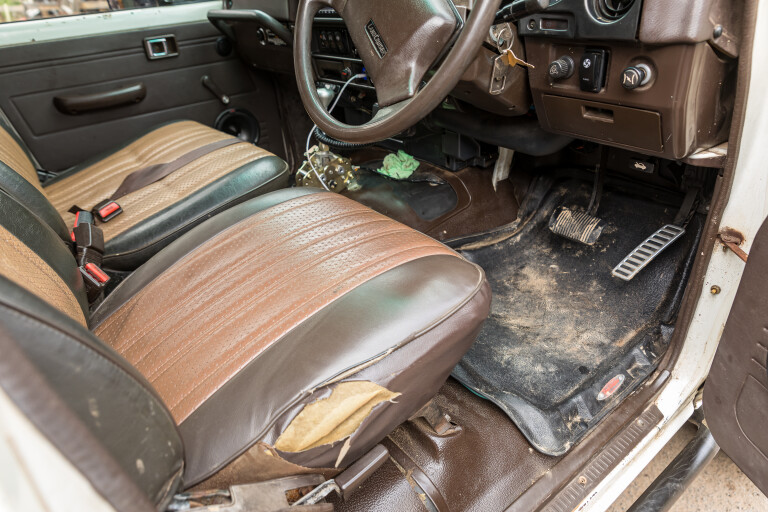
There’s a simple GME UHF and external speaker fitted for reliable comms in convoy, but don’t expect too much technological wizardry there. Even up the back it’s nothing but a simple storage drawer set-up. A metal 60L Engel fridge sitting next to a jerry can of water counting for touring mods.
Verdict
The 60/80 hybrid you’re looking at won’t come cheap. There’s plenty of hard cash in parts, and hard work in custom fab, and that’s what makes it a true standout. It’s not another disposable accessory designed to be replaced. This LandCruiser has spent more than 30 years on the tracks, and with a little hard work it’ll spend another 30 more.
What is castor?
You ever had a shopping trolley with a bung wheel? No matter how hard you fight, it’s near impossible to keep it pointing where you want it. And the reason is something that affects our 4x4s too, especially when you lift them.
You’re probably familiar with the term camber, it’s when the top of a wheel pokes in a different amount to the bottom. When the top is in more, that’s negative camber. When the bottom is in more, that’s positive camber.
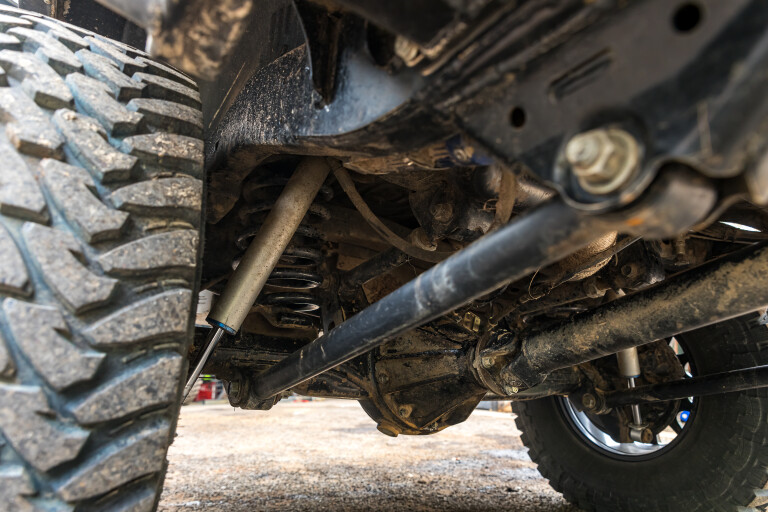
Castor works the same way, except it’s the relationship between the top and bottom ball joints in an independent 4x4, or the top and bottom bearings in the swivel hub on a solid axle 44x. Effectively, it’s the imaginary line the wheel pivots on when turning.
When the top bearing or ball joint leans back behind the bottom bearing or ball joint, that’s positive castor. When it’s the opposite, it’s negative castor. By changing this angle you can make your 4x4 lazier, or more fidgety to steer. Much like a bung shopping wheel trolley, when you lift your 4x4 the angles are all thrown out and result in horrible steering.
Castor correction arms correct the angle between those two pivot points to ensure your 4x4 drives how you want it to.

COMMENTS